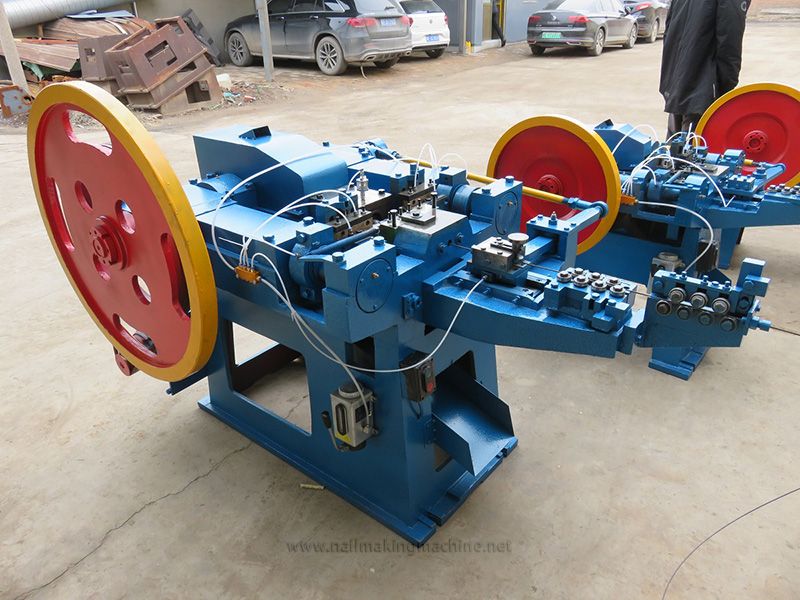In today’s rapidly advancing industrial age, machinery and technology streamline countless processes, from the making of complex electronics to the simplest of items, like nails. Among these essential machines, the nail making machine holds a significant place. In this article, we’ll dive deep into understanding the nail making machine—its introduction, working principle, cost, and address some frequently asked questions.

Introduction to Nail Making Machines
Nails are essential fasteners used in countless construction and household tasks. Be it the construction of skyscrapers, bridges, roads, or merely hanging a picture frame at home; nails play an indispensable role. Their high demand has given rise to automated machines designed explicitly for manufacturing nails.
A nail making machine automates the nail production process, taking raw wire as the input and producing nails of desired sizes as output. These machines have been through significant evolution since their inception. Modern-day machines are more efficient, robust, and versatile, catering to the production of various nail types, including wire nails, concrete nails, and screw nails.
Working Principle of Nail Making Machines
The nail making machine operates in a series of coordinated steps to transform a wire coil into a finished nail. Here’s a breakdown of the process:
Wire Feeding: The machine starts with feeding the wire from a coil. The wire undergoes straightening and is then cut into a specified length, which eventually becomes the nail’s length.
Head Forming: Once the wire is cut, it’s fed into a mould where the nail head is formed. This process typically involves a punch that strikes the wire’s end to create a flat head.
Sharpening the Point: The other end of the wire, opposite to the head, is then sharpened to form the nail’s pointed end. This ensures the nail can be driven into surfaces easily.
Ejection: After the nail has been formed, an ejector mechanism removes the nail from the mould, and it’s then collected in a bin or container.
Cooling and Hardening: Some nails, depending on their purpose, may be quenched or cooled to enhance their strength and durability.
How Much Does a Nail Making Machine Cost?
The cost of a nail making machine varies based on several factors:
Size and Capacity: Machines designed to produce larger nails or those with higher production capacities tend to be more expensive.
Model and Features: Advanced models with enhanced features, such as automation, will cost more than basic models.
Brand and Quality: Established brands known for quality and durability may price their machines higher than lesser-known brands.
Regional Factors: Import duties, taxes, shipping, and other regional factors can also affect the final price.
To give a ballpark figure, the price for a Z94 nail making machine can range from USD 2,000 for models that produce smaller 1-inch nails to around USD 6,000 for those that manufacture larger 6-inch nails. However, for the most accurate and up-to-date pricing, prospective buyers should contact manufacturers or distributors directly.
For high speed nail making machines, speed 700-800 pieces nails per minute, the price will be around $15000-$20000/set.
Nail Making Machines: FAQs
What raw material is used in nail making machines?
Common wire nails: Usually made from low carbon SAE1008 or SAE1018 coils.
Concrete nails: Made from high carbon wire, typically #45 or #60.
Screw nails: Generally made using 08AL, drywall nails with C1022, or 304 stainless steel.
Is the nail-making business profitable?
Yes, the profit margins can range between $40-$60 for 1000 kg of wire nails. However, this varies based on several factors like raw material cost, labor, and market demand.
Can one machine produce all sizes of nails?
No. For producing a range of 1-6 inch nails, you’ll need multiple machines. For instance, a Z94-2C model is required for 1-2 inch nails, a Z94-4C for 2-4 inch nails, and a Z94-5C for 4-6 inch nails.
What are the typical spare parts of a nail-making machine?
Wearable parts include the nail mold, nail cutter, and punch. These parts have varying lifespans, and regular maintenance and replacements are essential for uninterrupted production.
Is single-phase electricity sufficient for nail-making machines.
No. Nail-making requires a lot of power, especially when forming the nail cap. Machines typically need a three-phase industrial electric motor ranging from 380V to 415V.
How many workers are required to operate a nail-making plant?
For a small-scale plant, 3-4 workers are usually sufficient.
Conclusion
A nail making machine is a testament to human ingenuity, turning a simple piece of wire into a utility that’s indispensable in modern construction and daily life. With a clear understanding of its operation, cost, and some common queries, you are better equipped to venture into the nail-making business or simply appreciate the engineering behind every small nail that holds our world together.